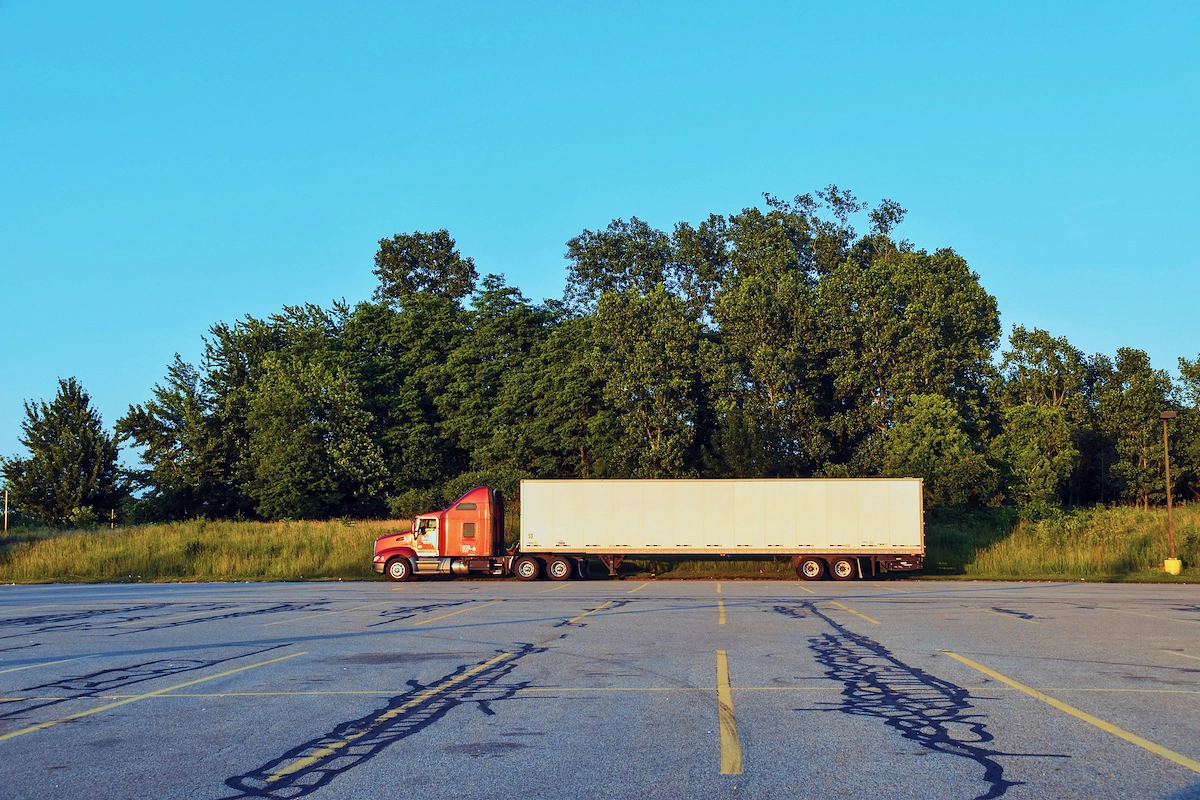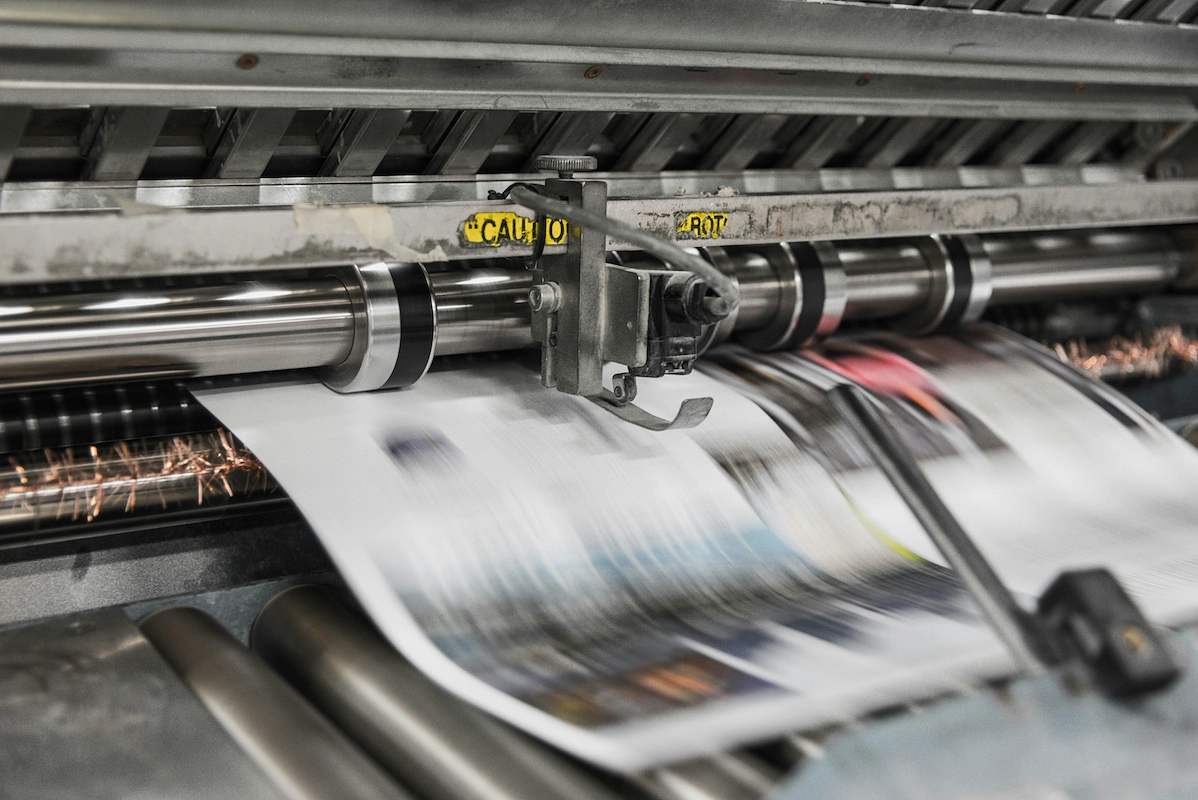Starting a truck stop is a rewarding venture that combines hospitality and retail management with sharp business savvy. The industry is worth billions, fueled by a steady demand for fuel, food, and safe parking from long-haul truckers, RV travelers, and even daily commuters.
This guide will take you through the practical steps of validating your business concept, securing funding, selecting the right location, and obtaining necessary permits to help you launch a successful truck stop business in the U.S.
Step 1: Plan and validate your business concept
Start by analyzing traffic flow data from your state's Department of Transportation. You should also review reports from the National Association of Truck Stop Operators (NATSO) to understand industry benchmarks and customer needs. This data helps you identify high-traffic corridors.
Next, map out competitors using Google Maps. For deeper insights, you might use demographic data services like Placer.ai to analyze foot traffic patterns around existing truck stops. This analysis shows you where service gaps exist in the market.
Understand your startup costs
A truck stop requires significant capital. Initial investments can range from $2 million to over $7 million, depending on the scale and location. A frequent misstep is to underestimate the cost of land and construction, so research these thoroughly.
Here is a typical breakdown. Land acquisition can cost $500,000 to $2 million. Construction and site development often run from $1 million to $5 million. Fueling infrastructure alone, including tanks and pumps, adds another $200,000 to $500,000.
Do not forget permits, which can be $10,000 to $50,000. Initial inventory for the store and restaurant might require $100,000 to $300,000. These figures help you build a realistic financial forecast for your business plan.
Here are 3 immediate steps to take:
- Request traffic count reports for three potential highway corridors from your state's DOT.
- Create a spreadsheet to list all truck stops within a 50-mile radius of your target areas.
- Draft a preliminary budget with estimated costs for land, construction, and fuel systems.
Step 2: Establish your legal structure and secure licenses
First, you will need to decide on a business structure. An LLC is a popular choice because it protects your personal assets from business debts. It also offers pass-through taxation, which helps you avoid the double taxation common with C-Corporations. File with your Secretary of State.
With your legal entity established, get a federal Employer Identification Number (EIN) from the IRS website. You need this number to hire employees and file taxes. You must also obtain a state sales tax permit to collect and remit taxes on retail and food sales.
Navigate key permits and regulatory bodies
Your restaurant requires a food service license from the county health department. For fuel operations, you must meet Environmental Protection Agency (EPA) rules for underground storage tanks. This process involves specific permits and inspections that can take several months to complete.
Selling alcohol and tobacco requires separate state licenses. An alcohol license can cost from $300 to over $14,000 and often takes six months or more for approval. A frequent misstep is to apply too late, which can significantly delay your grand opening.
Finally, connect with your local city or county planning department. You will need building permits for construction and a certificate of occupancy once the work is done. These documents confirm you meet all local zoning laws and safety codes before you can open for business.
Here are 4 immediate steps to take:
- File for an LLC or Corporation with your Secretary of State.
- Apply for a free EIN directly on the IRS website.
- Contact your state's alcohol control board to confirm license timelines.
- Request a zoning and permit checklist from your local planning department.
Step 3: Secure insurance and manage risk
Your insurance package will be one of your largest operational expenses, so it is important to get it right. You need a multi-layered plan to protect your assets from the unique risks of a truck stop, from fuel spills to customer accidents.
Key insurance policies to consider
General Liability insurance is your first line of defense. It covers customer injuries on your property. You should look for policies with at least $1 million to $2 million in coverage. Slips and falls are a frequent source of claims in this business.
Property Insurance protects your buildings, equipment, and inventory. A mistake many new owners make is overlooking specific coverage for underground fuel storage tanks. The EPA has strict rules, and a standard policy may not cover a leak or spill, which can be financially devastating.
You will also need Workers' Compensation, which is mandatory in most states if you have employees. In addition, Commercial Auto insurance is necessary for any vehicles your business owns, like a maintenance truck.
Annual premiums for a comprehensive package can range from $25,000 to over $100,000. You might want to get quotes from specialists like Federated Insurance, Great West Casualty, or AmTrust Financial. They understand the specific risks of fuel and retail operations.
Here are 3 immediate steps to take:
- Request quotes from at least two insurance providers that specialize in truck stops.
- Ask potential insurers about specific riders for underground fuel tank liability.
- Verify your state's minimum requirements for workers' compensation coverage.
Step 4: Select your location and purchase equipment
You will need a large plot of land, typically 10 to 25 acres, to accommodate truck parking, fuel islands, and your main building. Look for sites zoned for commercial or industrial use. Your local planning department can confirm the zoning for any potential properties.
Pay close attention to site access. A frequent misstep is to choose a location with poor entry and exit points for 80,000-pound trucks. Your site must have long, wide driveways and be near a major highway interchange for easy access.
Secure the right site
When you negotiate a lease, aim for a long-term agreement of 10 years or more to secure your rate. You might also want to include a "right of first refusal" clause. This gives you the option to buy the property or expand later if the opportunity arises.
Outfit your facility
With your site chosen, it is time to think about equipment. Your fuel systems are the most complex part. This includes underground tanks and dispensers from brands like Gilbarco Veeder-Root or Wayne Fueling Systems. Expect this to cost $200,000 to $500,000.
For the retail store and restaurant, you will need shelving, coolers, and a full commercial kitchen. You can source these items from suppliers like WebstaurantStore. Budget around $75,000 to $200,000 for this part of the setup.
Some new owners try to save money with used equipment, but this can lead to higher maintenance costs down the road. Factor in a monthly budget for repairs, as equipment downtime directly impacts your revenue.
Here are 4 immediate steps to take:
- Identify three potential 10+ acre sites with commercial zoning near a highway.
- Consult a commercial real estate agent about lease terms for these sites.
- Request equipment quotes from a fuel systems supplier like Gilbarco.
- Create a list of kitchen and retail equipment needed from a site like WebstaurantStore.
Step 5: Set up your payment systems
Your truck stop will need to handle multiple payment types, including fleet fuel cards like Comdata and EFS, standard credit cards, and cash. Your main point-of-sale system must integrate fuel pump authorizations with your inside retail and restaurant sales for smooth operation.
Many new owners get surprised by the transaction fees, which can range from 2.5% to over 4% for fleet cards. You should negotiate these rates carefully, as they directly affect your fuel profit margins. Look for a payment processor that offers transparent pricing.
For services that happen on-site or on-the-go, like minor lot repairs, JIM offers a streamlined solution. With JIM, you can accept debit, credit, and digital wallets directly through your smartphone. Just tap and the sale is done. This is useful for mobile mechanics or lot attendants.
At just 1.99% per transaction with no hidden costs or extra hardware, its rate is competitive. Other providers often charge average commission rates between 2.5% and 3.5%, plus monthly fees. Getting started with JIM is straightforward.
- Get Started: Download the JIM app for iOS.
- Make a Sale: Type the sales amount, hit sell, and ask your customer to tap their card or device on your phone.
- Access Funds: Your money is available right on your JIM card as soon as the sale is done, with no wait for bank transfers.
Here are 3 immediate steps to take:
- Get quotes from processors that handle both fleet cards and standard credit cards.
- Ask for a full fee schedule to understand all potential costs beyond the transaction rate.
- Download the JIM app to test its functionality for smaller, mobile sales.
Step 6: Secure funding and manage your finances
Explore your loan options
The SBA 504 loan program is a strong fit for truck stops. It helps finance major assets like real estate and equipment. The structure requires only a 10% down payment from you, with a bank covering 50% and a Certified Development Company (CDC) financing the remaining 40%.
You can also seek conventional commercial loans. These often require a larger down payment, typically 20-25%, and a robust business plan with solid financial projections. Lenders want to see that you have thoroughly researched your market and operational costs before they commit millions.
Calculate your working capital
With financing for the build-out secured, your focus shifts to operational cash. You will need significant working capital for the first six months to cover fuel inventory, payroll, and retail stock. Many new owners underestimate this figure, which can strain the business before it gains momentum.
Budget at least $250,000 to $500,000 for this initial period. This buffer ensures you can operate smoothly and handle unexpected expenses without disrupting service. Your detailed business plan should outline these month-to-month costs clearly for lenders to see.
Here are 4 immediate steps to take:
- Contact a local Certified Development Company (CDC) to discuss SBA 504 loan eligibility.
- Refine your business plan with five-year financial projections for lenders.
- Calculate your specific working capital needs for the first six months of operation.
- Approach two commercial banks to compare their loan terms and down payment requirements.
Step 7: Hire your team and set up operations
You will need a General Manager to oversee the entire operation, with a typical salary of $60,000 to $90,000. Your front-line staff includes cashiers and fuel desk attendants, who usually earn $13 to $19 per hour. For your restaurant, plan for cooks at $15 to $25 per hour.
A mistake many new owners make is understaffing during peak hours. Plan for at least three to five employees per shift to cover retail, fuel, and food service. High turnover can also be a challenge, so offer competitive wages and a positive work environment from day one.
Get your team trained and certified
Your restaurant employees must have state-mandated food handler permits. For the fuel desk, staff need to complete Underground Storage Tank (UST) Class C operator training. This certification covers emergency procedures for the fuel systems and is an EPA requirement.
To manage your team, you might use scheduling software like 7shifts or When I Work. These platforms help you build schedules and communicate with staff. Your POS system, like those from Gilbarco, will handle sales and inventory management across the facility.
Here are 4 immediate steps to take:
- Draft job descriptions for a General Manager, Cashier, and Cook.
- Check your state health department's website for food handler permit rules.
- Research EPA-approved providers for UST Class C operator training.
- Create a sample weekly shift schedule to estimate your staffing needs.
Step 8: Market your business and attract customers
Create a loyalty program and partnerships
A loyalty program is key to earning repeat business. You can offer drivers points for every gallon of fuel or dollar spent in-store. These points can then be redeemed for free showers, coffee, or meals. This approach builds a reliable customer base.
You might also partner directly with trucking fleets. Offer their drivers a consistent discount, perhaps 2-4 cents per gallon. This can secure a contract that guarantees steady fuel sales and provides fleets with a predictable expense.
Use targeted advertising
Highway billboards are effective. Place them 20 to 50 miles from your exit to give drivers plenty of notice. A mistake many new owners make is to only list fuel prices. You should also advertise your best amenities, like secure parking or a 24-hour restaurant.
Also, consider digital ads on platforms drivers already use. Apps like Trucker Path or DAT One have advertising options that target users along specific routes. This puts your services in front of drivers exactly when they are looking for a stop.
Here are 4 immediate steps to take:
- Outline a points-based loyalty program for drivers.
- Contact two local trucking fleets about fuel discount partnerships.
- Get quotes for two highway billboards within a 50-mile radius.
- Research advertising packages on the Trucker Path app.
Step 9: Develop your pricing strategy
For fuel, use a cost-plus model. You will add a fixed margin, typically $0.15 to $0.35 per gallon, over your wholesale cost from a service like OPIS. A frequent mistake is to compete only on fuel price, as your real profit comes from inside sales.
In your retail store, aim for a 50% to 100% markup on most items. For example, a drink that costs you $1 should sell for at least $2. For your restaurant, your food cost should not exceed 28-35% of the menu price to ensure profitability.
To stay competitive, regularly check prices at other truck stops within a 50-mile radius. You can use apps like GasBuddy for fuel prices, but you should also visit in person to see their in-store and restaurant pricing. This helps you adjust your strategy as needed.
Here are 4 immediate steps to take:
- Subscribe to a fuel price reporting service like OPIS to track wholesale costs.
- Survey fuel and retail prices at three competing truck stops.
- Calculate menu prices for five key restaurant items based on a 30% food cost target.
- Set initial retail markups for different product categories in a spreadsheet.
Step 10: Maintain quality and scale your operations
To maintain quality, use checklists for key areas. Showers and restrooms should be inspected hourly. Your restaurant must display its health department score prominently. You can also use resources from the NATSO Foundation for operational best practices.
Track your key metrics daily. These include fuel gallons sold, average in-store purchase value, and nightly parking occupancy. These numbers give you a clear picture of your business's health and help you spot trends before they become problems.
Benchmarks for growth
With your data in hand, you can set clear triggers for expansion. When parking occupancy stays above 90% for six consecutive months, it is time to plan for more spaces. A sustained 15-20% year-over-year growth in inside sales signals you might need a larger retail footprint.
Some owners make the mistake of expanding too quickly. A better approach is to build a cash reserve equal to 12 months of operating expenses before you commit to a second location. For multi-site management, you might eventually look at software like PDI Enterprise.
Here are 4 immediate steps to take:
- Create an hourly checklist for restroom and shower cleanliness.
- Build a simple spreadsheet to track daily fuel volume and parking occupancy.
- Define your expansion trigger, like 90% parking occupancy over six months.
- Look at the features of enterprise software like PDI for future planning.
You have the roadmap to launch your truck stop. Remember, while fuel brings drivers in, your in-store and restaurant sales are what build a truly profitable business. With a solid plan, you are ready to create a welcome stop for travelers on the road.
For smaller on-the-go sales, a solution like JIM turns your phone into a card reader. You can accept payments anywhere for a flat 1.99% fee, with no extra hardware needed. Download JIM and see how it works for your business.















